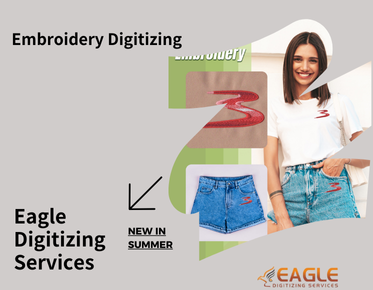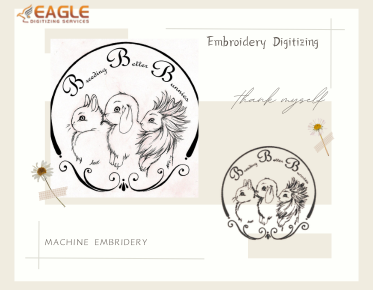From Raster to Vector: Detailed Conversion Process
In the world of digital graphics, the transition from raster to vector images is a crucial process that enhances the scalability and quality of designs. This conversion is essential for various applications, including printing, embroidery, and web design. The journey from raster to vector involves several steps, each requiring precision and expertise. One of the leading providers in this field is Eagle Digitizing, known for their professional vector conversion services.
Understanding Raster and Vector Images
Before delving into the conversion process, it's important to understand the fundamental differences between raster and vector images. Raster images are composed of pixels, each with a specific color value. This pixel-based structure makes raster images resolution-dependent, meaning they can lose quality when scaled up. Common raster formats include JPEG, PNG, and GIF.
In contrast, vector images are made up of paths defined by mathematical equations. These paths can be scaled infinitely without losing quality, making vector images ideal for logos, illustrations, and any graphics that require resizing. Common vector formats include SVG, AI, and EPS.
The Conversion Process
Step 1: Analyzing the Raster Image
The first step in the conversion process is to analyze the raster image. This involves assessing the image's complexity, colors, and details. High-resolution images with clear lines and distinct colors are easier to convert. However, images with gradients, shadows, or intricate details may require more effort and expertise.
Step 2: Tracing the Image
Once the analysis is complete, the next step is to trace the image. This can be done manually or using software tools. Manual tracing involves using vector drawing tools to recreate the image's paths. This method offers precision but can be time-consuming. Alternatively, software tools can automate the tracing process, though they may require manual adjustments to ensure accuracy.
Step 3: Refining the Vector Paths
After tracing, the vector paths need to be refined. This involves adjusting the paths to ensure they accurately represent the original image. This step may include smoothing curves, aligning paths, and correcting any distortions. The goal is to create a clean and precise vector representation of the raster image.
Step 4: Adding Colors and Effects
With the paths refined, the next step is to add colors and effects. This involves filling the vector shapes with colors that match the original image. If the raster image includes gradients or shadows, these effects can be recreated using vector techniques. This step requires a keen eye for detail to ensure the vector image closely resembles the original.
Step 5: Exporting the Vector Image
The final step in the conversion process is to export the vector image. This involves saving the image in a vector format such as SVG, AI, or EPS. The choice of format depends on the intended use of the image. For example, SVG is ideal for web use, while AI and EPS are preferred for print and professional design applications.
Applications of Vector Images
Vector images are used in a wide range of applications. In the printing industry, they are essential for creating high-quality prints that maintain clarity at any size. In web design, vector images ensure fast loading times and crisp visuals on any device. Additionally, vector images are crucial in the embroidery industry, where precision and scalability are key.
Challenges in Raster to Vector Conversion
While the conversion process offers numerous benefits, it also presents challenges. One of the main challenges is dealing with complex images that contain gradients, shadows, or intricate details. These elements can be difficult to replicate in a vector format and may require advanced techniques and tools.
Another challenge is ensuring color accuracy. Since vector images use a different color model than raster images, maintaining color consistency can be tricky. This requires careful color management and calibration to ensure the final vector image matches the original.
Future Trends in Vector Conversion
As technology advances, the process of converting raster to vector images is becoming more efficient and accessible. New software tools are emerging that offer improved automation and accuracy, making the conversion process faster and more reliable. Additionally, the rise of artificial intelligence is paving the way for smarter tools that can handle complex conversions with ease.
Looking ahead, the demand for vector images is expected to grow as more industries recognize their benefits. From digital marketing to product design, vector images offer a versatile and scalable solution for a wide range of applications.
For those seeking professional vector art services, Eagle Digitizing excels in delivering high-quality conversions, transforming creative visions into scalable designs. Whether you're looking to convert a simple logo or a complex illustration, their expertise ensures a seamless transition from raster to vector.
.png)


